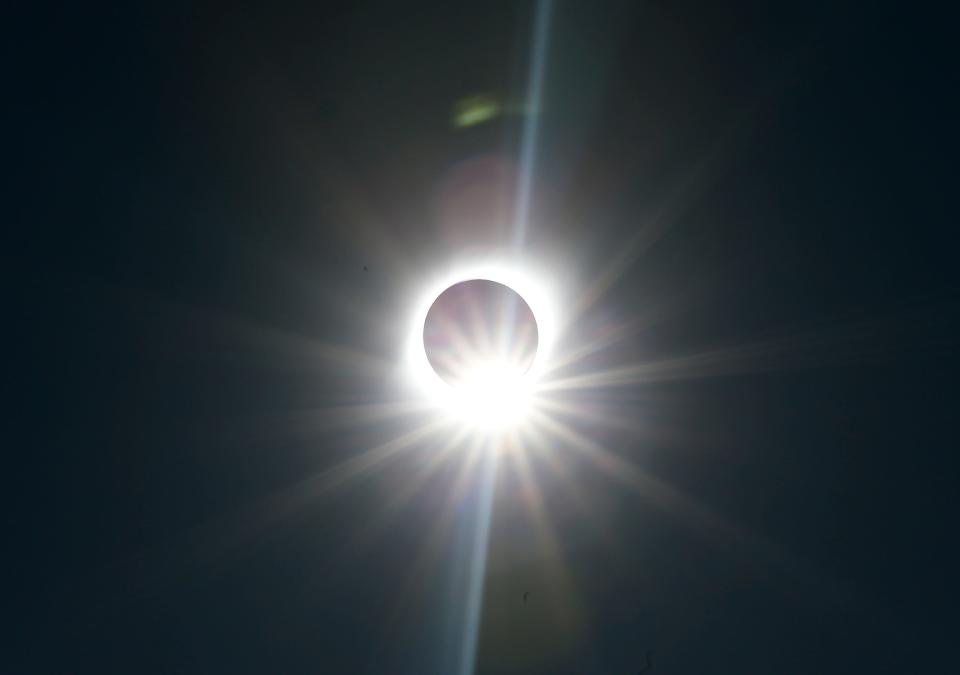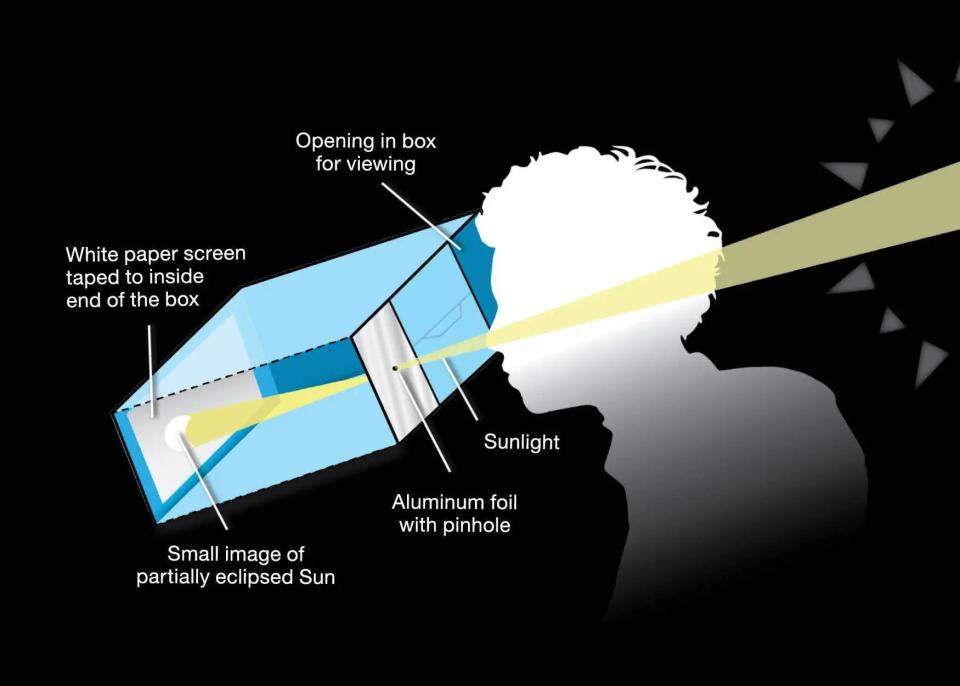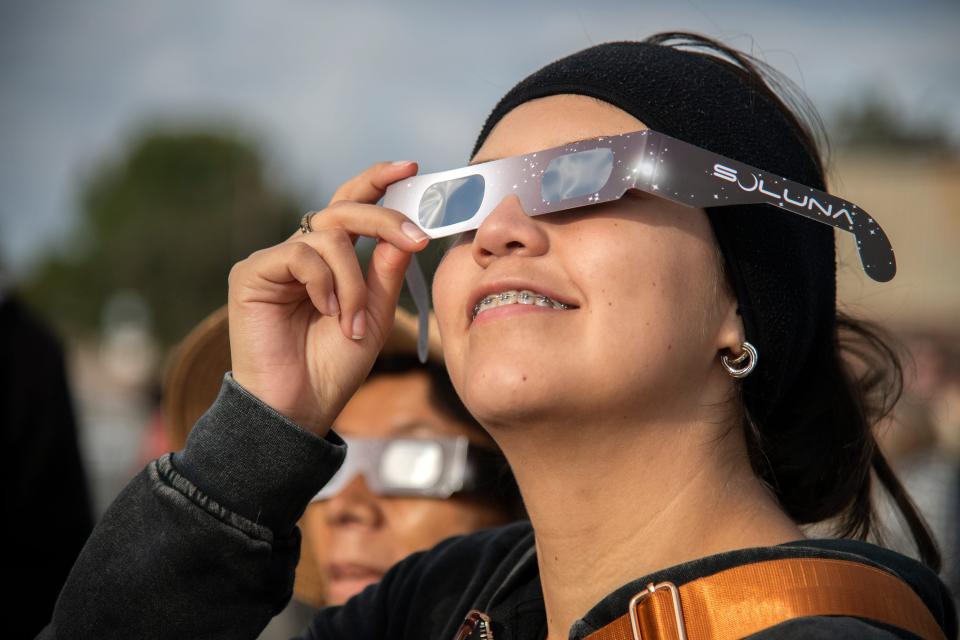Here's a guide to where and how to watch the solar eclipse around Athens
Families, stargazers, and science enthusiasts across the nation are eagerly awaiting the total solar eclipse passing over several states on April 8. Georgia will not see a total eclipse, but it may be possible to get a partial view of this fascinating astronomical event.
A solar eclipse is caused by the moon moving between the sun and the Earth, causing the moon to block the sun's light from reaching Earth, casting a shadow down on the planet. According to NASA's maps, Georgians may be able to see about 65% to 85% of the sun covered, depending on where you live.
But you can't just look up at the sky. Here's more info on how to safely watch the phenomenon and where to watch it locally:
More: When is the April 8 solar eclipse in the Augusta area? Find out here with your ZIP code
When is the best time to watch the eclipse around Athens?
The peak time for Athens to see the eclipse is about 3:06 p.m. Residents can expect about 80% of the sun to be obscured.
Where can Athens area residents go to see the total solar eclipse?
The closest state to Georgia for the total eclipse is Arkansas. One place suggested by Astronomy magazine is Russellville, Ark., which lies in the center of the path. It's 375 miles away, but the best 10-hour route takes one through Birmingham, Ala.; Memphis, Tenn.; and, Conroe, Ark. Other recommended spots are Cape Girardeau, Mo., which is 417 miles away.
If you're prone to a more northly trek, the magazine recommends Lima, Ohio, a 473-mile trip. But the best state, when it comes to weather conditions, is Texas. But it's a haul. Just reaching the border is a 797-mile trip from Georgia. The best cities in Texas to visit for the eclipse, according to Astronomy, are Radar Base, Kerrville, Lampasas, Hillsboro and Sulfur Springs. A visit to the 2024 total solar eclipse from Athens is obviously not a day trip.
An interactive zip code and map tool is available to take a closer look at your exact area's peak times and other possible spots for seeing the total eclipse.

What is the safest way to watch the solar eclipse?
It is never safe to directly look at the sun with the naked eye or through any lens (camera, binoculars, etc.) without a special-purpose solar filter. Those wanting to watch the eclipse should only use solar viewing glasses, also known as eclipse glasses, or a certified handheld solar viewer.
"Eclipse glasses are not regular sunglasses; regular sunglasses, no matter how dark, are not safe for viewing the sun. Safe solar viewers are thousands of times darker and must comply with the ISO 12312-2 international standard," NASA's website notes. "Always inspect your eclipse glasses or handheld viewer before use; if torn, scratched, or otherwise damaged, discard the device. Always supervise children using solar viewers."

Packs of certified glasses can be purchased on Amazon for $15-25, depending on how many are needed.
Do not use eclipse glasses or handheld viewers while also viewing the event through cameras, binoculars, or telescopes, because those devices require different types of solar filters to be safe.
NASA also recommends indirect viewing methods to view the eclipse without looking directly at the sun. One way is to use a pinhole projector, which has a small opening (for example, a hole punched in an index card) and projects an image of the sun onto a nearby surface. With the sun at your back, you can then safely view the projected image. Don't look at the sun through the pinhole.
An eclipse projector can also be made with a cardboard box, a white sheet of paper, tape, scissors, and aluminum foil. With the sun behind you, sunlight will stream through a pinhole punched into aluminum foil taped over a hole in one side of the box. During the partial phases of a solar eclipse, this will project a crescent sun onto a white sheet of paper taped to the inside of the box. Look into the box through another hole cut into the box to see the projected image.
More: A total solar eclipse is coming to the U.S. Here's what you'll see in Georgia.

Are there any eclipse viewing parties around Athens?
Telescopes will be set up at the Athens-Clarke County Library on Baxter Street by Caren Snook for public viewing. She is the wife of local astronomy expert Maurice Snook. Also, amateur astronomer Tony Tolbert will have a telescope at the Winterville Library on Marigold Lane.
Viewing glasses have been obtained by the Clarke County School District that will allow students to participate in a viewing. The district announced that elementary students can take the glasses home, while middle and high school students can view the eclipse during school hours.
The Oglethorpe County Library at 858 Athens Road, Lexington, will host a viewing party that begins at 1:30 p.m. This event is free.
This article originally appeared on Augusta Chronicle: Solar Eclipse 2024: Where to watch in Athens area, safety info

